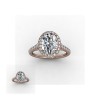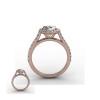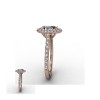Happy Stories From our customers
Read testimonials-
-
G.D. Matching Wedding Bands
-
Jewelry Facts for your Tuesday Brain
Did you know:
The tradition of borrowing jewelry from high-end Jewelers to wear to the Academy Awards ceremony was started in 1944 by Jennifer Jones who wore Harry Winston’s jewelry for the occasion.
Pure gold is always yellow. The color of gold can be altered by adding in different metals.
Pearls are formed when a tiny bit of sand gets trapped inside an oyster. The oyster produces ”nacre” as a defense mechanism that coats the intruder, layer after layer.
A pearl is only found naturally in 1 in every 10,000 oysters.
Cultured pearls are formed with human intervention but placing an irritant into an opened mollusk or oyster.
Mother of Pearl is the thick nacre that coats the inner shell of the oyster or mollusk. The oyster secretes the nacre from the cells on the mantle tissue to protect itself from parasitic organisms.
Necklace Lengths:
-15-16″ is called “Choker length” and hits just above the collar bone.
-18″ length chains are called “Princess Length” and hit just below the collar bone.
-22-23″ length necklaces are called “Matinee length”
-28-36″ necklaces are called “Opera length”
-37″ or longer necklaces are called “Sautoir or Rope Length”
The Pearl of Lao Tzu is the largest pearl ever found, weighing 14.1 lbs and 10 inches in diameter.Most Diamonds are 1-3 million years old.
The name diamond comes from the Greek word Adamas, which means indestructible or unconquerable.
Engagement rings are worn on the third finger of the left hand, because the ancient Egyptians believed that the vein in that finger ran directly to the heart.
A ruby is actually a red sapphire.
High quality emerald is more valuable than a diamond.
Cartier introduced the metal platinum to Jewelry in 1896.
Source: Beautifulbands.com
http://www.youtube.com/watch?v=2bxTD6KWO5Y
-
Summer Updos with Jewelry
If you have longer hair, you know that it becomes a bit problematic when the weather starts heating up. Ponytails become your new best friend…but they can often look rather plain. This video shows you how to create simple updos and the ways in which you can use jewelry from your box for some extra sparkle.
http://www.youtube.com/watch?v=C0w9wrDSDmk
-
C.G. + A.G. Channel Set Wedding Set
-
K.C. + A.D.’s Emerald Cut Black Rhodium Wedding Sets
-
“. . . Am I repeating myself? I guess I am, but that is how it feels, GORGEOUS!!!!!”
Dear Joe and P
The ring is gorgeous! It is sooooo delicate and gorgeous!!!!!! Am I repeating myself? I guess I am, but that is how it feels, GORGEOUS!!!!!With gratitude L. -
R.C. Rose Gold Oval Halo Engagement Ring
-
J.C. Princess Cut Halo Engagement Ring
-
Chokers Throughout History
Choker necklaces have been around a long, long time. From the French Revolution to the most recent Fashion Week in Paris. This BuzzFeed article covers the entire span with some amazing images. Check it out!
1798: Political dress during the French Revolution.

During the French Revolution, women took to wearing red ribbons around their necks to pay homage to those who met their death at the guillotine. The ribbon could be worn around the neck, or another fashion came in the form of an X around the shoulders and back. (via)
Source: blastmilk.com1860s: The uniform of prostitutes.

Manet’s famous painting, “Olympia,” (1863) depicted a prostitute wearing a black ribbon around her neck. During this era, a ribbon around the neck could mean a woman was a prostitute.
Source: en.wikipedia.org1874: But ballerinas and fashionable ladies wore them too.

Some of history’s most famous chokers can be found in Degas’ ballerina paintings, of which he did many in the 1870s and 1880s.
Source: en.wikipedia.orgLate 1800s: Royal trend

Alexandra, Princess of Wales, reportedly wore thick rows of pearls and velvet to cover a scar on her neck which made her self-conscious. She was influential in expanding the trend. (via)
Source: britannica.com




































